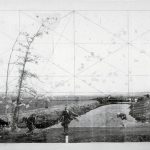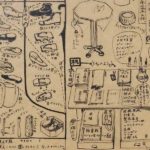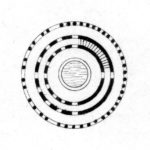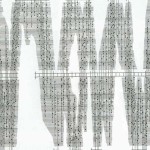Starting in 1814, when he was already 55, Japanese artist Hokusai Katsushika published over 4000 small drawings on extremely varied subjects. The 15 volumes, each one including sixty leaflets, are called “Hokusai’s Manga” The term “manga” doesn’t refer to the kind of narrative format we all know today, but to the original meaning of the term, which is “curious drawings” or “whimsical drawings.”

The publication of the volumes spanned 64 years, encountering huge success of public. Hokusai produced the first one as a means to finance his career in a difficult time, and he later kept drawing and publishing the volumes until his death in 1849, while the final three got out posthumously.
The volumes are block-printed in three colors, black, grey and pink, and contain depictions of people, natural features, constructions, landscapes, and work tools, among others.
Each page collects a set of different illustrations tied to a specific theme or a series of variations on the same figure, intended to explain different kinds of movements.
The enterprise reveals an encyclopedic will and a taxonomic pleasure as well as the educational intent of instructing scholars in the art of drawing. The books are a continuous discovery of carefully composed figures sometimes floating on a blank page, other times sketched over a common background.









































Further reading: Hokusai’s Manga
14 out of 15 Hokusai’s Manga are hosted under a Public Domain L





Wonderful collection of the wonder full